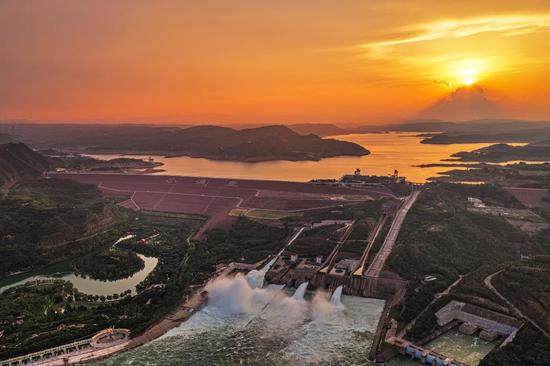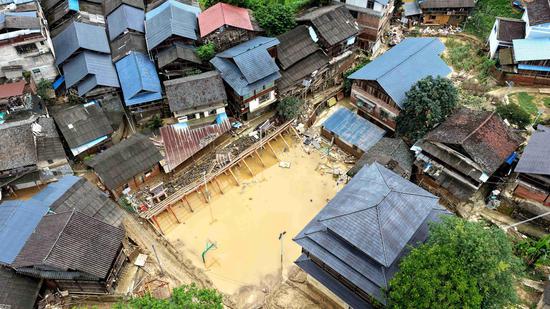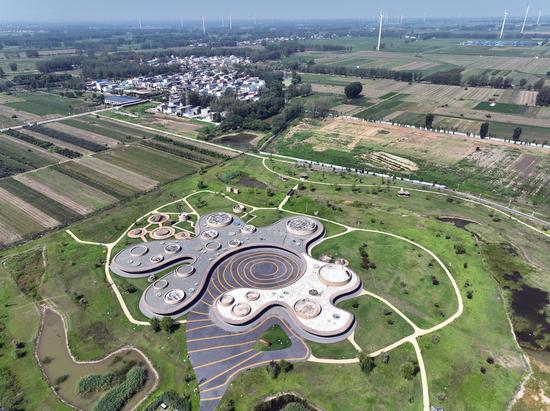China's National Meteorological Center (NMC) on Thursday morning renewed a yellow alert for high temperatures, forecasting scorching weather above 37C in over 10 provinces and regions. Some areas, including northwestern Zhejiang and Turpan in Xinjiang, could see temperatures soar past 40C.
According to the forecast, regions including the southern part of North China, the Huanghuai area, Jianghuai, Jianghan, most of Jiangnan, southeastern Sichuan, Chongqing, and the northern part of South China are expected to experience temperatures above 35C. In particular, southern Hebei, northern and southwestern Shandong, most of Henan, Anhui, Jiangsu, most of Chongqing, southeastern and western Hubei, northern Hunan, most of Jiangxi, central and western Zhejiang, and central and western Fujian will see highs ranging from 37C to 39C.
This heat alert is part of a broader wave of recent meteorological warnings. At 6 am Thursday, the NMC also issued a yellow alert for dense fog, warning that visibility in parts of the northern and central Yellow Sea and waters near Chengshantou could drop below one kilometer.
By 10 am, the center had issued additional alerts, including a blue alert for rainstorms and severe convective weather. Between 2 pm Thursday and 2 pm Friday, heavy to torrential rainfall is forecast for parts of eastern Qinghai, central and eastern Gansu, central and southern Ningxia, western Sichuan Basin, western Yunnan, southeastern Tibet, Hainan Island, and eastern Hebei, central-eastern Liaoning, and eastern Jilin.
Extreme downpours of 100 to 180 millimeters may affect parts of eastern Gansu, northwestern Sichuan Basin, southeastern Jilin, and eastern Liaoning. Some of these regions are also expected to see severe convective weather such as thunderstorms.
To strengthen public health resilience amid climate change, China's National Disease Control and Prevention Administration and the China Meteorological Administration (CMA) jointly issued the country's first national-level high-temperature health risk warning on Wednesday. The announcement aims to establish an early warning-based coordinated response mechanism, integrating meteorological alerts with public health interventions.
According to the warning, from 8 pm Wednesday to 8 pm Thursday, a yellow-level alert of elevated health risk due to high temperatures was issued for the southern part of North China, Huanghuai, Jianghuai, Jianghan, northern Jiangnan, northern Northeast China, as well as parts of Inner Mongolia and Xinjiang. An orange alert, indicating high health risk, was issued for areas in Jiangsu, Shandong, Henan, Anhui, and Heilongjiang.
Notably, parts of northern Jiangsu, central-eastern Shandong, eastern Henan, northern Anhui, and northeastern Heilongjiang are under a red alert, indicating extremely high health risk. The public is advised to monitor updates, avoid outdoor activities during peak heat hours, and stay well-hydrated, according to the CMA.
The health risk warning system includes five levels: low, moderate, relatively high, high, and extremely high. These are based on analyses of the correlation between heat exposure and excess mortality from cardiovascular and respiratory diseases. Unlike previous threshold-based national warnings, the new system is regionally adaptive, offering more precise and localized risk assessments to guide public preparedness.
The meteorological authority said that the warnings will be disseminated via the "Tianhe" weather service system and sent through the national emergency alert platform, SMS, and mobile apps to relevant government departments. Information will also be shared with the public through social media platforms including Weibo and Douyin.


















































 京公網(wǎng)安備 11010202009201號
京公網(wǎng)安備 11010202009201號